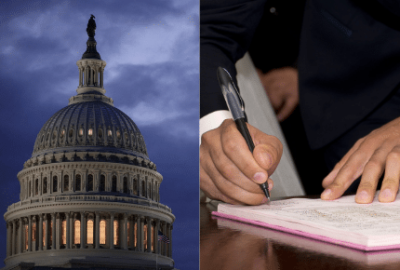

The General Services Administration received almost $27 million for two IT modernization projects from the Technology Modernization Fund.
NewPay
In response to the President’s Management Agenda and Cross-Agency Priority Goal on Shared Services, the General Services Administration (GSA) launched NewPay to modernize federal payroll services and ensure that employees’ payroll experience is consistent government-wide. Through NewPay, the government is deploying, for the first time, a standards-based software-as-a-service (SaaS) platform that all agencies can utilize to deliver payroll in a timely, reliable manner to the federal government’s 2.2 million civilian employees. In 2018, GSA awarded a NewPay blanket purchase agreement to configure commercial, off-the-shelf-based, SaaS solutions capable of managing time reporting and payroll across the government’s 300-plus different pay plans.
Application modernization
In 2018, GSA-IT Launched the application modernization project as an initiative to jump-start transformation and migration of agency systems from proprietary to open source technologies. The transformation simplified integrations with other systems; enabled greater agility, resiliency, scalability and performance, reducing the risks and lowering the cost of operations.
Additionally, GSA-IT created a playbook and has successfully used the process for other, non-Technology Modernization Fund-supported development and modernization projects.
NewPay
GSA’s NewPay Program utilized TMF funding to support a number of initiatives related to the technical design and development of the SaaS solution. In 2018, GSA awarded a NewPay BPA to configure COTS-based SaaS solutions capable of managing time reporting and payroll across the government’s diverse portfolio of pay plans and in 2019, GSA awarded task orders to support the development of a technical minimum viable product (MVP) for payroll only. Links to both award announcements are below:
Application modernization
GSA-IT used the TMF funds and leveraged existing contracts to modernize 11 applications and create the playbook. Three of the efforts completed during the first pilot phase in 2019, and the remaining eight are in process to complete before the end of fiscal 21.
NewPay utilized the TMF award to provide foundational support to design and configure the technical MVP for payroll calculation and allowed work to start and progress in an immediate fashion.
Application modernization
This work and effort would not have been possible without these additional funds. Specifically the playbook that has been key for other efforts.
Yes, the GSA NewPay Team made its first payment of $500,000. The GSA NewPay Team has an annual schedule of payments through fiscal 2024.
Application modernization
GSAIT’s first payment of approximately $4 million is in progress. GSA-IT has been able to meet the initial commitments with only the first two tranches of TMF funds. Therefore, GSA-IT will not be taking the third installment of the award.
NewPay
The GSA/NewPay team anticipates cost savings/avoidance will be realized upon completion of the payroll and time and attendance technical functionality and full customer migration to such solutions. In learning from the development process, the GSA/NewPay team is identifying other key variables and cost factors which could drive cost avoidance and opportunities to be more efficient in payroll management and operations.
Application modernization
GSA-IT is tracking the technology license footprint and future labor cost avoidance, but will not know the exact amounts until negotiations and contracts are updated in the next few years.
Application modernization
Through playbooks published at Tech.GSA.gov as well as briefing the Federal CTO Innovation Council.
General Response
The TMF Board is a high-caliber group of technology executives from across the federal community, and they are thought to have stated that they are primarily interested in investing in projects that have some kind of govternmentwide applicability, so the agency could advise those who follow in their footsteps to highlight and focus on describing the broader implications of the specific project at hand.
Based on the way the TMF payback rules are structured currently, it is very important that an agency have a good grasp on how it is going to pay back the TMF funds, i.e. known customers, reliable revenue stream, etc.
NewPay
Make sure organizations consider customer impacts and constraints, complexity, and risk when designing their payback model.
Application modernization
Make sure the payback model is approved at the highest levels before accepting the TMF loan.
Copyright © 2025 Federal News Network. All rights reserved. This website is not intended for users located within the European Economic Area.
Jason Miller is executive editor of Federal News Network and directs news coverage on the people, policy and programs of the federal government.
Follow @jmillerWFED


